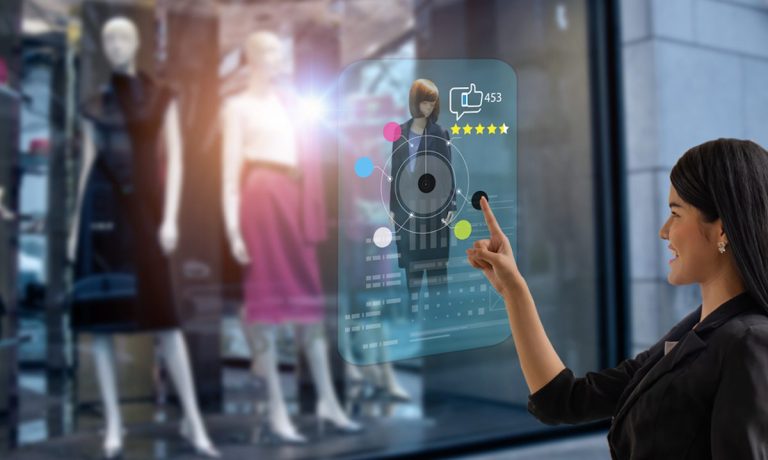
Brands are beginning to dip their toes into the virtual worlds of the metaverse, with Gucci, Nike, Vans and others opening up shop in Roblox, while Balenciaga and the NFL are among those creating “skins” for players in Epic Games’ Fortnite.
But for smaller brands that don’t have the in-house abilities to create digital assets, the jump from physical to virtual may be a bit daunting — which is one of the reasons Nextech AR earlier this week launched a software-as-a-service (SaaS) platform to enable the creation of 3D models that can be used to showcase products in augmented reality (AR) as well as within virtual worlds.
See more: Nextech AR Debuts 3D Model Creation Platform
Large enterprise retailers, including Kohl’s, Skate One and Kmart Australia, already use Nextech AR’s SaaS to create models for their websites, which allows consumers to visualize how an item will look in their space before making a purchase. Nextech said data provided by Shopify shows that AR can increase conversions by 94% and reduce returns by 40%.
Related news: Kohl’s Expands Augmented Reality Offering for eCommerce
One of the biggest obstacles to brands utilizing AR technology and entering the metaverse, David Ripert, CEO of Poplar Studio, told PYMNTS in a recent interview, is the availability of 3D models — for decades, products have been displayed on 2D web pages.
“When you’re shopping online, you’re seeing pictures, you’re seeing videos, you’re seeing those products in flat 2D,” Ripert said. “They haven’t created that 3D product … that you can wear on your avatar, on yourself in that virtual environment. So, that’s something brands need to look at right now.”
Also see: Augmented Reality Helping Build ‘Store of the Future’
CEO of Nextech AR Evan Gappelberg has said he expects 3D models to be “standard in eCommerce shopping in 2022 and beyond.”
“With our AI-driven 3D content creation capabilities, and now our low-cost, monthly fee-based SaaS platform, we are addressing this growing market demand and unblocking the 3D content creation bottleneck head on,” Gappelberg said in a statement.
Build Your Own Metaverse
Nextech is also going beyond simply 3D modeling merchandise, with plans to soon offer a “Metaverse Studio” SaaS product that allows retailers, brands and other clients to create their own metaverses and potentially recreate the social experience of in-person shopping. The company believes this is the first such product to be brought to market.
The Metaverse Studio is currently available as a managed service, but will likely launch as a SaaS solution in early 2022. Nextech customers will be able to create a spatial map through a downloadable app or by downloading the company’s SDK into their own application, giving creators access to 3D assets that can enable AR experiences in the metaverse.
“I’m very pleased with our rapid development and rollout of our SaaS platforms as we position ourselves in front of the massive multi-decade megatrend of the metaverse and augmented reality,” Gappelberg said. “We are one of the only AR companies that currently have technology that is disruptive, scalable and offered as a SaaS solution.”
Several brands have already begun experimenting with creating virtual stores on their websites with 3D models, though most lack the social interactions with others that define most of the metaverse. Neha Singh, CEO at experiential shopping software Obsess, told PYMNTS that she believes AR and virtual reality (VR) are the keys to making eCommerce more engaging.
Already used by Levi’s, Tommy Hilfiger, Ralph Lauren and other brands, Obsess creates a virtual store, either replicating a real-world location or creating something totally new, where consumers can browse and shop as they would without the internet.
“A lot more people can experience this, even if they can’t be there in person,” Singh said. “It just basically increases the audience for retail stores.” Brands can also incorporate interactive content, such as quizzes, videos and appointment booking, into the virtual stores.
Read more: eCommerce Needs to Evolve Beyond Decades-Old Transaction-Based Mindset